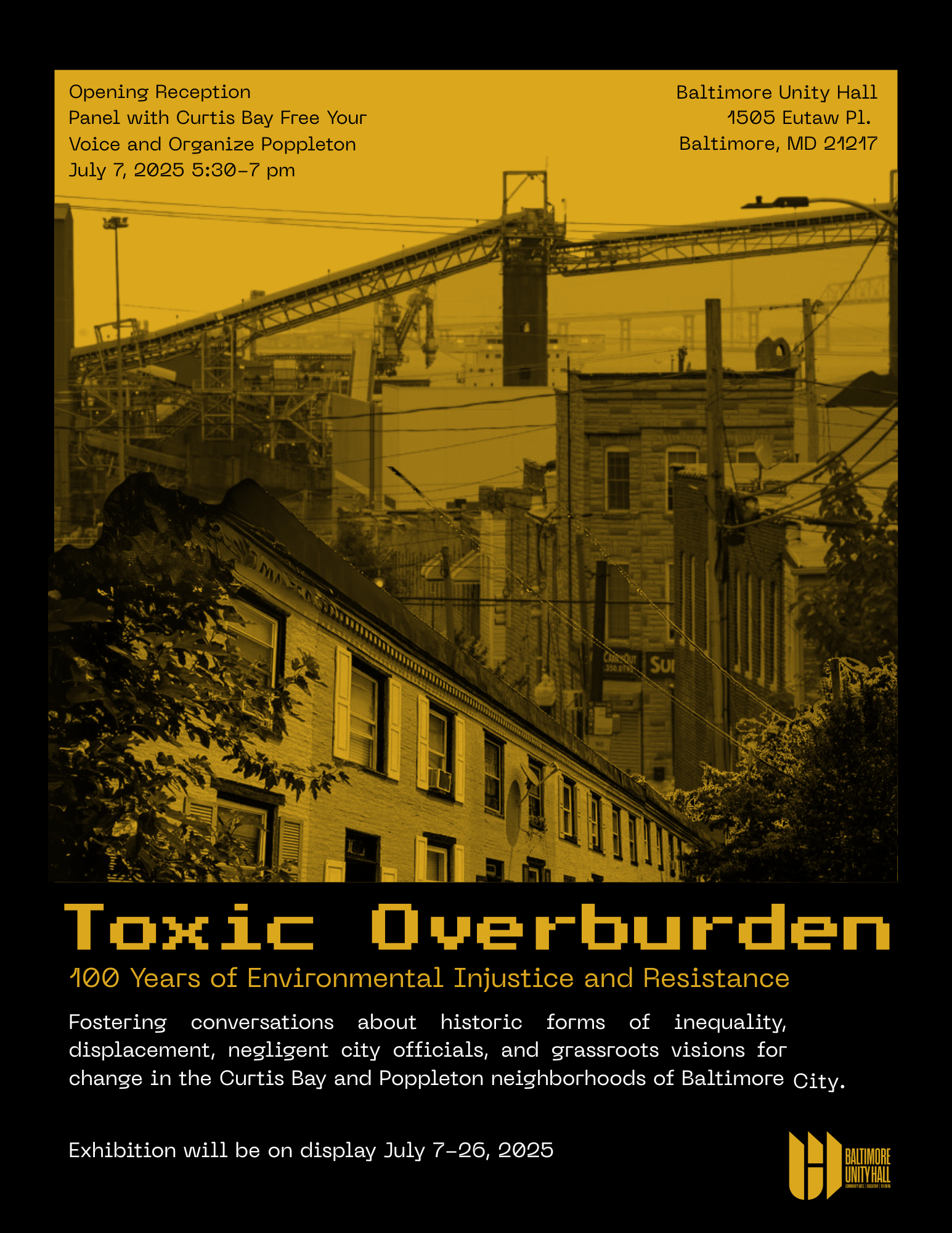Toxic overburden
The youth-envisioned and youth-designed installation “Toxic Overburden” moved on July 1 from the Peale Museum to Baltimore Unity Hall. The exhibit educates the general public about policies, practices, and budgets that have made our state and city officials complicit in ongoing environmental violence. For the past 15 years, Free Your Voice and the South Baltimore Community Land Trust (SBCLT) have been inspiring young people from South Baltimore communities to conduct their own research and utilize data to advocate for systemic change. This youth-designed exhibit (envisioned, designed, and built alongside) architects from Neighborhood Design Center (NDC) features some of the youth visions of environmental toxicity and harm through maps, photography, historic timelines, and interactive standing displays. The exhibit challenges the viewer to imagine green and sustainable alternatives which include worker benefit agreements and to plug into the ongoing advocacy work in the community.
The exhibit is the impetus for important cross-community conversations about historic forms of inequality, displacement, negligent city officials and grassroots visions for change. On Monday July 7 at 5:30 p.m. grassroots activists from Organize Poppleton and Curtis Bay Free Your Voice will come together to share stories of struggle and of success in their activism. Popppleton—a historically Black community in Southwest Baltimore has been entangled in a battle with NYC developer Dan Bythewood (a globetrotting businessman) from La Cité development corporation about his vision for their neighborhood which legacy residents ultimately see as part of a plan for serial displacement. Curtis Bay—a South Baltimore neighborhood has been facing displacements for decades as a result of the toxic overburden where over 70+ toxic stationary facilities are housed in this small geographic area causing heightened respiratory illnesses and shortened life- span compared to other parts of the city. Both communities have been incubating community-led and community-controlled development as a way to prevent further displacements of the poor and working classes. We will hear about the historic context of both communities, the building of power to build local movements, and the ways residents are envisioning (by controlling land) healthier futures and a more sustainable Baltimore.

